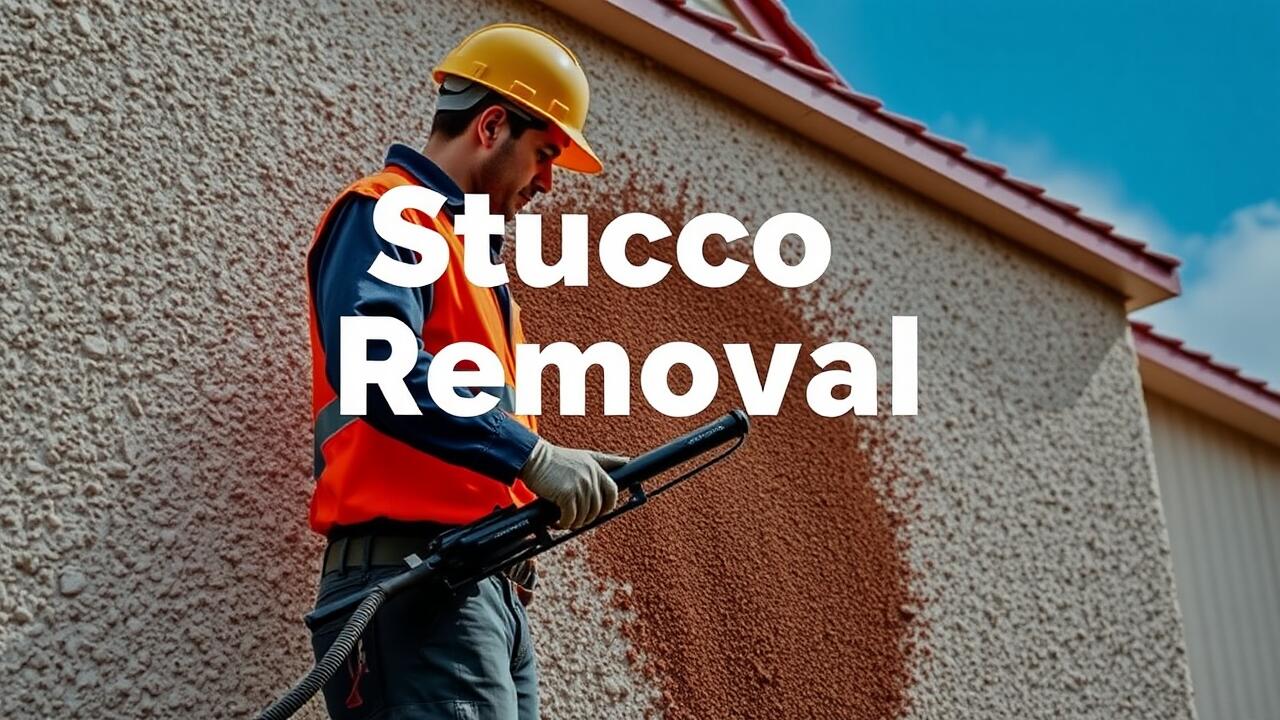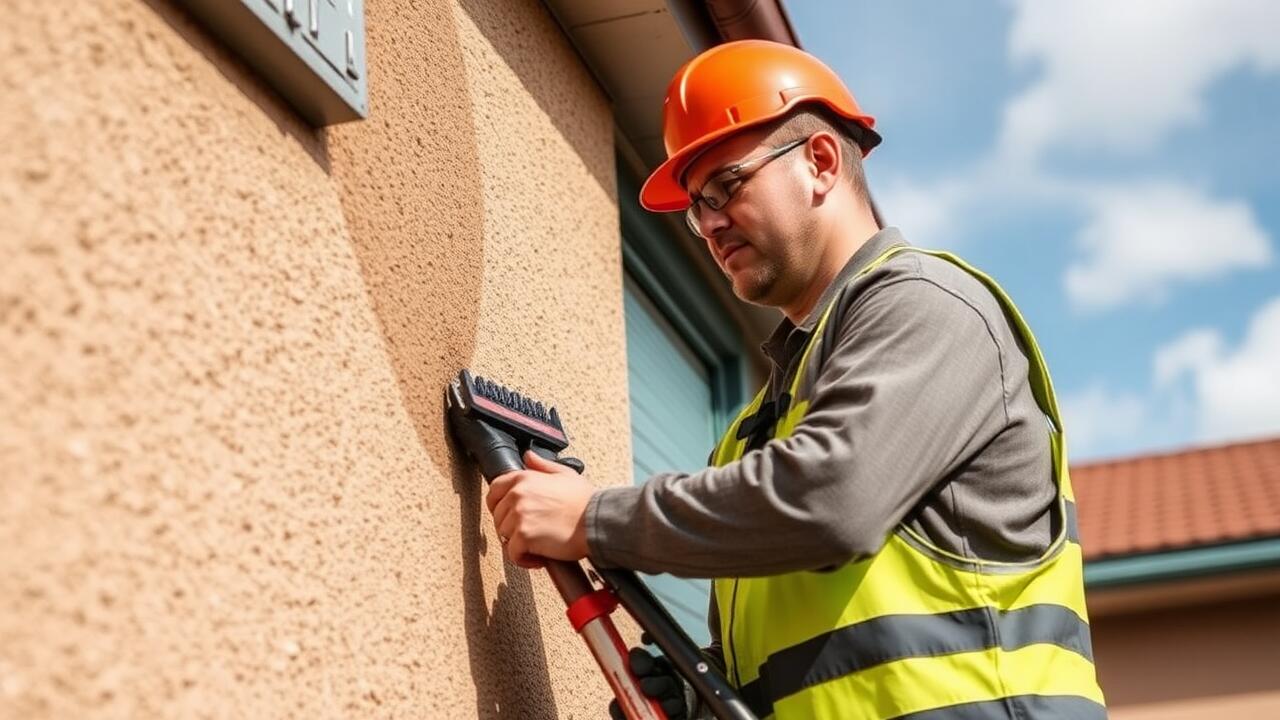
The Application Process of Stucco
The application process of stucco involves several essential steps that ensure a durable and aesthetically pleasing finish. The surface must first be prepared, which includes cleaning and, if necessary, repairing any underlying structures. Moisture barriers are often installed to protect against water damage, and then a metal lath is affixed to provide a solid base for the stucco. Once the base is ready, the first coat of stucco, known as the scratch coat, is applied. It is imperative to allow adequate drying time before subsequent layers are added.
After the scratch coat has cured, additional layers of stucco, including the brown coat and the final finish coat, are put on. Each application requires attention to detail to achieve a uniform texture and color. Proper curing is vital between each phase to ensure adhesion and strength. Homeowners may consider services like stucco removal in Pacific Palisades, Los Angeles, should they wish to change the texture or remove existing stucco due to damage or outdated aesthetics. This process may involve taking down layers carefully to protect the underlying structure and facilitate a smooth new application if desired.
Step-by-Step Installation Techniques
The process of installing stucco typically begins with preparing the wall surface. This includes cleaning the area and ensuring any previous coatings are removed. For homes needing a full renovation, stucco removal in Pacific Palisades, Los Angeles, may be necessary to eliminate old materials and make way for a fresh install. After preparing the surface, a moisture barrier is applied to protect against water intrusion, followed by the setting up of a metal lath or wire mesh for added durability.
The following step involves the application of base coat. This mixture is spread over the mesh and helps to bind the stucco to the wall. Once the base coat cures, artisans apply the finish coat. This final layer can vary in texture and color, providing homeowners with options to enhance aesthetics. After applying the finish, it is crucial to allow adequate curing time to ensure the stucco adheres properly and performs well under different weather conditions.
Differences Between Traditional and Synthetic Stucco
Traditional stucco, made from a mixture of cement, sand, and water, has been a popular exterior finish for homes for decades. Its application typically involves multiple layers, including a scratch coat, a brown coat, and a finish coat. This method creates a durable and textured surface that can withstand various weather conditions. However, traditional stucco can be prone to moisture issues if not properly installed and maintained, often leading to mold or damage beneath the surface. For homeowners facing such challenges, services like stucco removal Reseda, Los Angeles, can help restore the integrity of their homes.
Synthetic stucco, or exterior insulation and finish system (EIFS), offers a lighter weight alternative to traditional stucco. Made from a foam insulation board covered with a synthetic finish, this type of stucco provides excellent insulation and can achieve a variety of aesthetic finishes. While synthetic stucco is easier to apply and maintain, concerns about moisture intrusion have arisen. Proper installation is crucial to avoid water-related problems, making it essential for homeowners to seek skilled professionals for installation and potential repairs.
Comparing Benefits and Drawbacks
Stucco offers a range of benefits that make it a popular choice for home exteriors. Its durability and weather resistance can help protect homes from harsh conditions, contributing to energy efficiency. Additionally, stucco can be customized with various textures and colors, allowing homeowners to achieve a unique and appealing look. Maintenance is generally straightforward, requiring occasional cleaning and sealing to maintain its appearance and integrity.
On the other hand, there are drawbacks to consider with stucco. Cracks may develop over time, particularly if the application was done improperly or if there are significant shifts in the foundation. Repairing these cracks can be somewhat challenging, sometimes necessitating professional assistance. In cases where extensive issues arise or if homeowners desire a different exterior finish, stucco removal may be required, with services like Stucco Removal Venice, Los Angeles, available to facilitate this process.
Maintenance Strategies for Stucco Exteriors
Maintaining the appearance and functionality of stucco exteriors requires regular assessments and upkeep. One essential strategy is to inspect the surface for signs of damage such as cracks, fading, or moisture intrusion. Prompt repair of any identified issues will prevent more extensive damage. In addition, ensuring proper drainage around the house helps minimize water-related problems. Regular cleaning with a gentle pressure wash can also rejuvenate the surface and remove dirt and mildew buildup.
When extensive damage occurs, professional services may become necessary. In cases where repairs are insufficient, homeowners might contemplate complete stucco removal. Services like stucco removal Venice, Los Angeles, specialize in safely removing failing stucco while minimizing disruption to the surrounding areas. This step can be ideal for homeowners looking to upgrade their exterior finish or address underlying issues affecting their stucco. Regular maintenance combined with professional assistance when needed ensures that stucco homes remain durable and visually appealing over time.
Maintaining Aesthetics and Functionality
Maintaining the aesthetics and functionality of stucco exteriors requires regular attention and care. Routine inspections should identify cracks or damage promptly. Addressing any issues early prevents further deterioration and ensures the surface remains visually appealing. Cleanliness also plays a crucial role; using a soft brush or a pressure washer on low settings can remove dirt and mold while preserving the integrity of the stucco. Furthermore, routine maintenance includes applying a breathable sealant, which protects the structure from moisture infiltration while allowing for necessary evaporation.
In some cases, regardless of the maintenance efforts, extensive damage might necessitate stucco removal. Should the need arise, homeowners in Mar Vista, Los Angeles, can seek professional help for stucco removal services ensuring that the job is done efficiently. Replacing or repairing extensive sections of stucco can enhance the home’s overall appearance and protect it from future damage. These strategies not only extend the life of the stucco but also maintain the property’s value and curb appeal.
FAQS
What materials are typically located behind stucco on a house?
Behind stucco, you typically find a weather-resistant barrier, such as building paper or a house wrap, followed by a layer of insulation or sheathing, and then the framing of the house.
Why is it important to know what is behind stucco?
Understanding what is behind stucco is crucial for maintenance and repair purposes, as well as for addressing potential moisture issues that can lead to mold or structural damage.
Can I remove stucco myself to inspect what's behind it?
While it's possible to remove stucco yourself, it's recommended to hire a professional to ensure proper techniques are used and to avoid damaging the structure or causing further issues.
How can I tell if there is moisture trapped behind the stucco?
Signs of moisture trapped behind stucco can include peeling paint, discoloration, mold growth, and damp patches on the interior walls.
Is there a difference between traditional and synthetic stucco in terms of what is behind them?
Yes, traditional stucco typically has a more extensive layering system with a cement base, while synthetic stucco (EIFS) often includes a foam insulation board as part of its structure, which can affect what lies behind the exterior finish.

